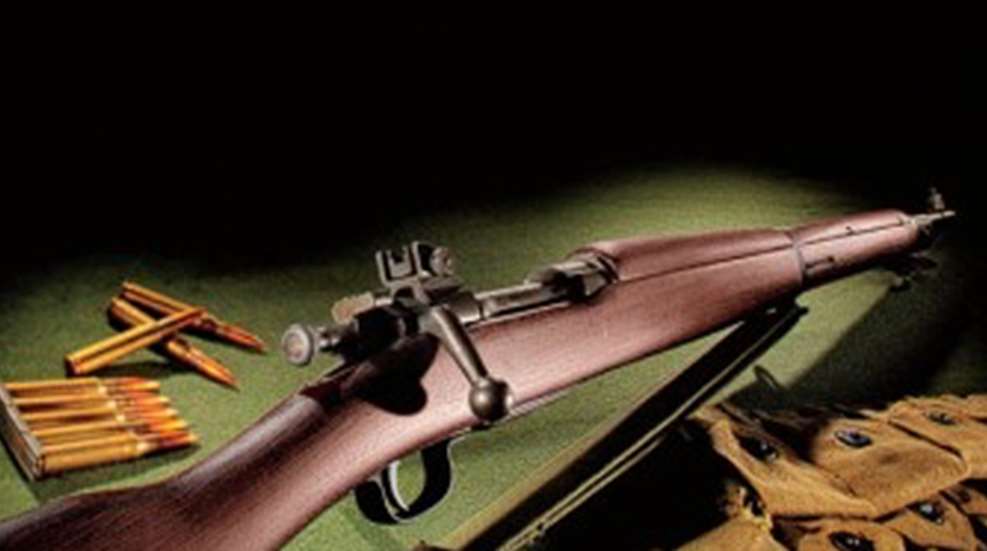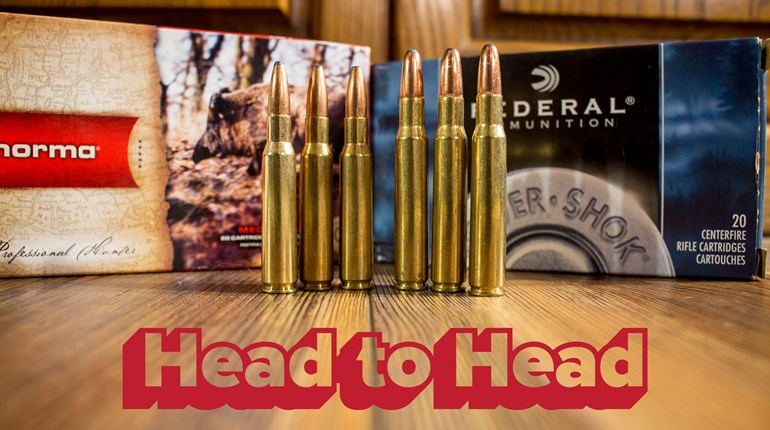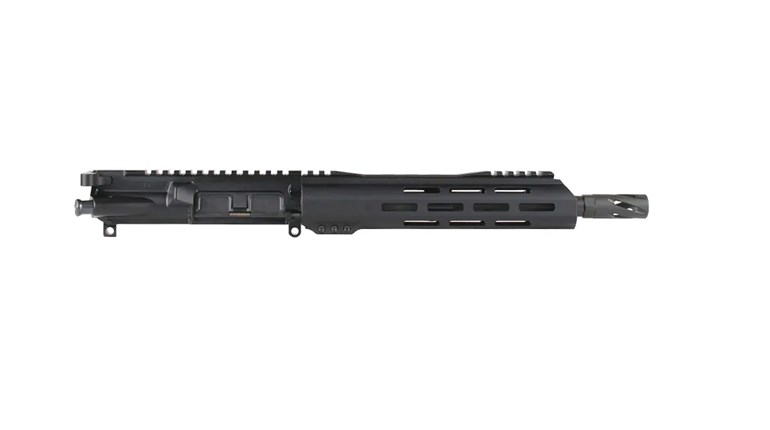
Hindsight is a fascinating thing, especially when it comes to classic firearms. It enables us to take note of how many times the United States Army has given famous battlefield weapons an honorable discharge, only to recall them later. The Colt Single Action Army is a good case in point, as are the Model 1917 Enfield and both the Colt and Smith & Wesson Model 1917 revolvers. In more recent years, the M14 has been resurrected.
One of the most notable examples of this governmental rethink—or "why demilling 'obsolete' weapons is not a good idea"—is United States Rifle, Caliber .30-06, Model 1903A3. Unlike the aforementioned Colts, Smith & Wesson and Enfield, the M1903A3 was not a reconditioned version of a pre-existing model, but was in fact newly manufactured, although it did take practically all of its inspiration from that hero of World War I, the M1903 Springfield. Actually, the M1903A3 started out fighting the Germans and Japanese in World War II as the vintage M1903.
Although our primary World War II battle rifle was the M1 Garand, the bombing of Pearl Harbor plunged the U.S. into the war and caught our armed forces entirely off guard. There were simply not enough Garands to go around, even with the Springfield Armory and Winchester working full-time to turn them out. Although Rock Island Armory (RIA) halted production of the M1903 after World War I, the Springfield Armory continued turning them out until 1927. Thus, these military bolt actions, which— fortunately for logistics—used the same .30-'06 Sprg. cartridge as the M1 Garand, were immediately pressed into service.
But with war raging, demand for individual shoulder weapons grew beyond the available supply. Rifles were also needed for military duty on the home front as well. Thus, in September 1941, the facilities of Remington Arms were conscripted to manufacture the M1903 Springfield, using mothballed tooling from RIA. The serial numbers for these rifles, which were stamped with an "R," began at 3,000,000.
However, as the old RIA tooling began to wear out, a number of changes were gradually made to the basic M1903 configuration being produced on new machinery. Early in the war, the Springfield Armory switched from the original milled-steel parts of the 1903 to stamped parts in the interests of economy and speed of manufacture. Remington adopted this change as its new machinery was brought online. And instead of having blued-steel, a feature of the World War I M1903s, the rifles used in World War II had a more-durable Parkerized finish. In addition, the rear sight of the M1903 was changed to a peep-aperture—adjustable for both windage and elevation—and was relocated to the rear of the receiver, placing it closer to the shooter's eye, thereby increasing sight radius to provide greater accuracy potential. Finally, around serial number 3,330,000, the military decided enough changes had been made to warrant a new official designation: United States Rifle, Caliber .30-06, Model 1903A3.
Interestingly, the rifle still kept the M1903's somewhat controversial magazine cutoff lever, a steel tab located on the left side of the receiver. When placed in the middle position, it permitted the bolt to be withdrawn from the receiver, but when in its "off" or downward position, where the tab is nestled into an inlet in the stock, it disengaged the magazine follower. Thus, cartridges would not feed into the chamber from the fixed magazine when the bolt went forward. This effectively transformed the rifle from a bolt-action repeater with a cycling rate of 15 to 20 shots per minute into a single-shot.
During basic training, recruits were instructed to employ the magazine cutoff lever and load each round manually, keeping the cartridges in the internal magazine as a reserve. Needless to say, these instructions were immediately ignored as soon as a G.I. got into his first firefight. The official thinking behind the cutoff lever was to curtail wanton waste of ammunition in the excitement of combat. I find it interesting to compare this battlefield tactic to Vietnam, where our troops were encouraged to fire their M16s in fully automatic mode.
Although the M1903A3 kept the stripper-clip guide milled into the rear of the receiver, the stock was slightly redesigned. This resulted in doing away with the elongated finger grooves on both sides of the forearm. In addition, the M1903A3A1—which first appeared in 1929 as a match rifle—featured a Type-C stock with a semi-pistol grip in an attempt to reduce recoil, a sore point with many G.I.s who were issued the straight-gripped rifle. Unfortunately for them, the majority of M1903A3 stocks retained the straight-gripped design.
By the end of 1942, the Smith Corona Typewriter Company joined Remington in manufacturing the M1903A3. Smith Corona rifles were manufactured at its Syracuse, NY, factory and are usually unmarked as to maker.
By this time, Springfield M1903A3 barrels began to feature their now-famous two-groove rifling to speed up production and reduce cost. Though, accuracy was not affected by this change, M1903A3s with the reduced-rifling barrels were issued with notices to concerned G.I.s assuring them accuracy would not be compromised.
Army snipers had a different story to tell: Using a M1903A3 variant—the M1903A4 with a Unertl 7.8X scope—they made kills as far out as 1,000 yards. The Marines used these same rifles in sniping operations during the Korean War, and in Vietnam the Navy took advantage of the M1903A3 to detonate floating mines.
Indeed, in spite of the fact that the M1 Garand began to appear in greater numbers on the battlefield, many Army Rangers and some Marine units preferred the Springfield M1903A3. For one thing, it did not have the M1's annoying habit of broadcasting a loud ping as the last round was fired and the clip ejected, informing the enemy the soldier had to reload.
From World War I through Vietnam and beyond, the M1903A3 has served our country for more than a century—not a bad record for a service rifle that mirrored a firearm originally issued to troops the same year the Wright Brothers took their first flight at Kitty Hawk, NC.




































